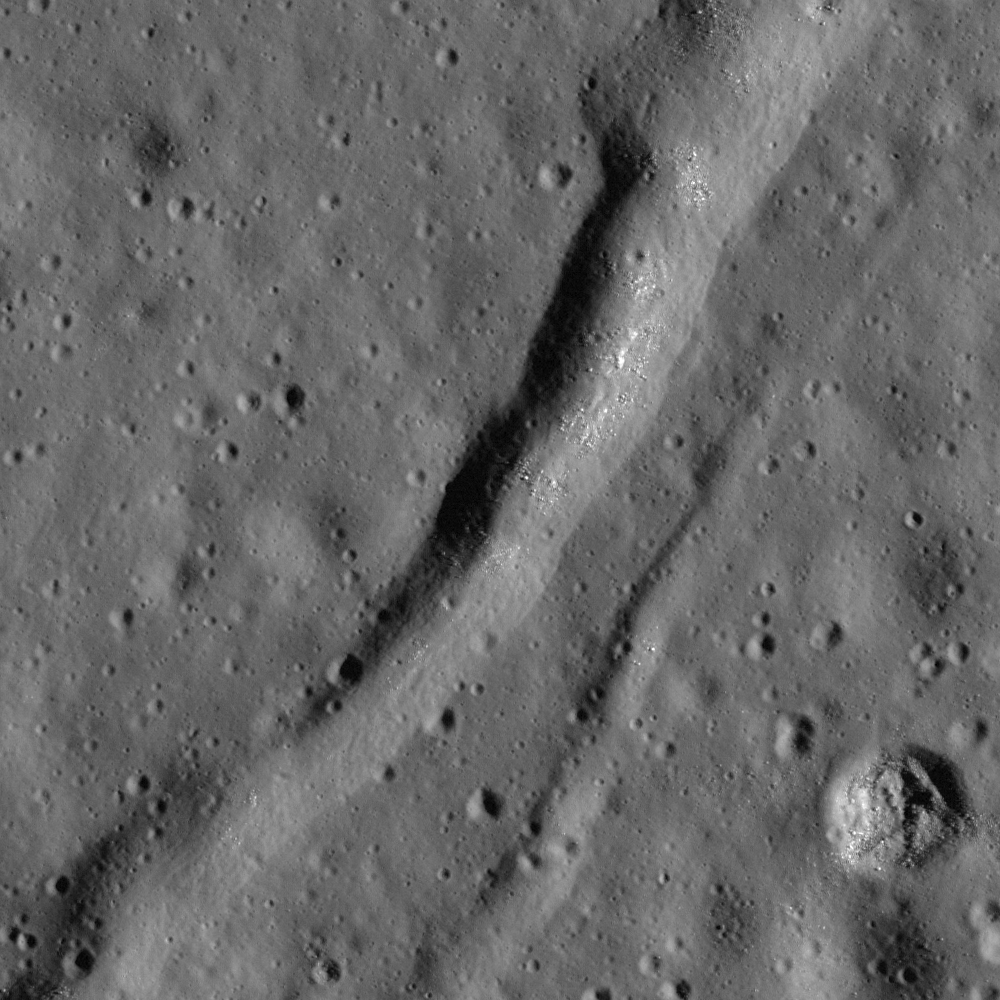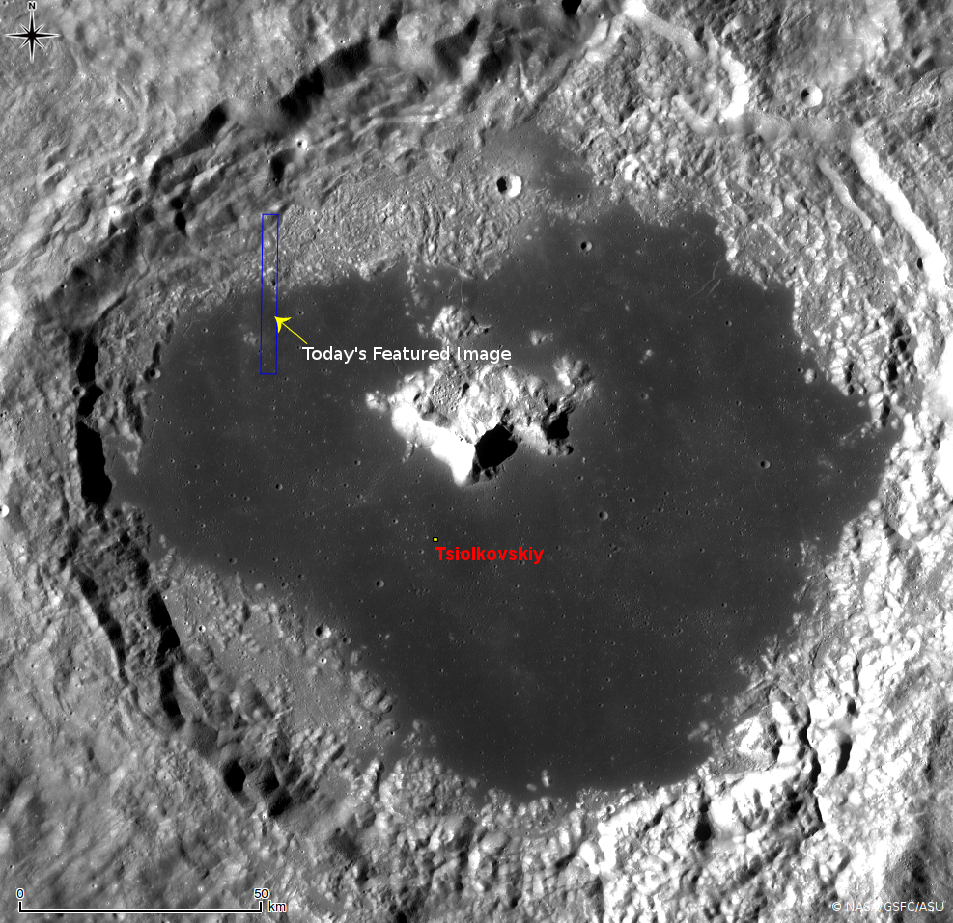
The mare in the Tsiolkovskiy crater looks extremely flat and smooth at first glance. But if you stare carefully, you can find many tectonic features deforming this large plain; extension cracks, classic wrinkle ridges, and special wrinkle ridges that have a convex bulge shape.
Today's Featured Image is a portion of a narrow "bulging" wrinkle ridge (19.404°S, 127.343°E), 60 to 100 meters in width, extending in a northeast direction to the edge of the mare. Wrinkle ridges are common in the lunar mare and are believed to be a type of thrust fault. These ridges typically have a steep slope on one side and a shallow slope on the other. In this case, the ridge seems to have a uniform curved shape. Local tectonic conditions such as the thickness of mare, stress direction, and the layer strength affect the final shape of a ridge. Since this ridge has a unique shape, it is now targeted for future NAC stereo imaging. From the new stereo pair, scientists will make a detailed topographic map that will allow tectonic experts to better understand the nature of this feature and add to our knowledge of tectonism on the Moon.
Explore the full length of the "bulging" wrinkle ridge and other nearby tectonic features.
Related posts:
Tectonics in Mare Frigoris, Stress and pull, Relative age relationships, Zebra Stripes, Right Angle, Wrinkle ridge in Oceanus Procellarum, Sinuous Chain of Depressions
Published by Hiroyuki Sato on 11 January 2012
